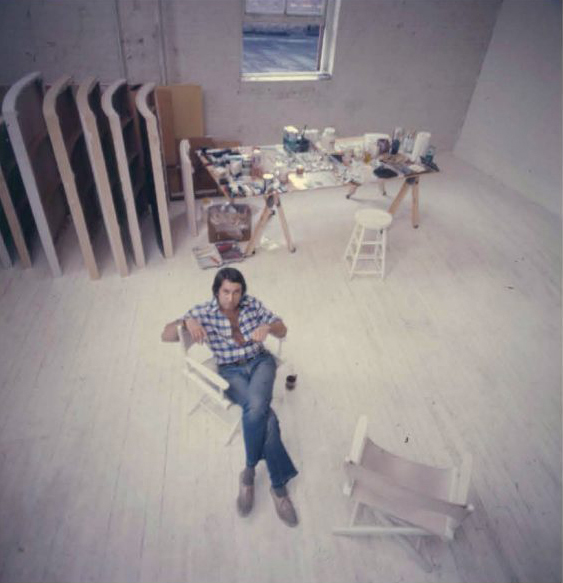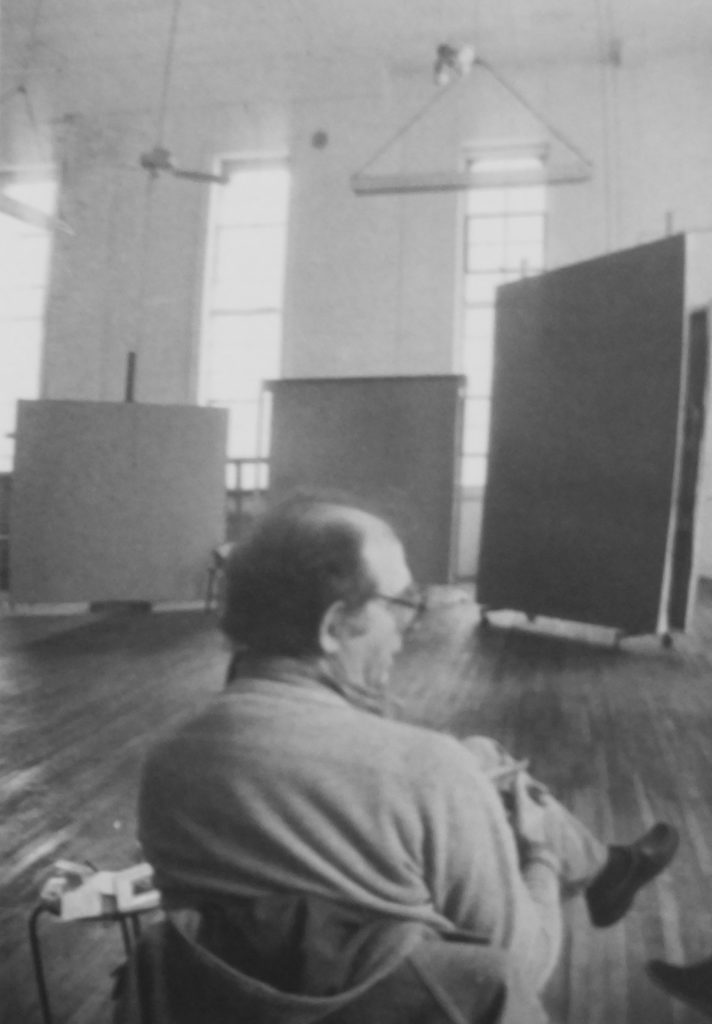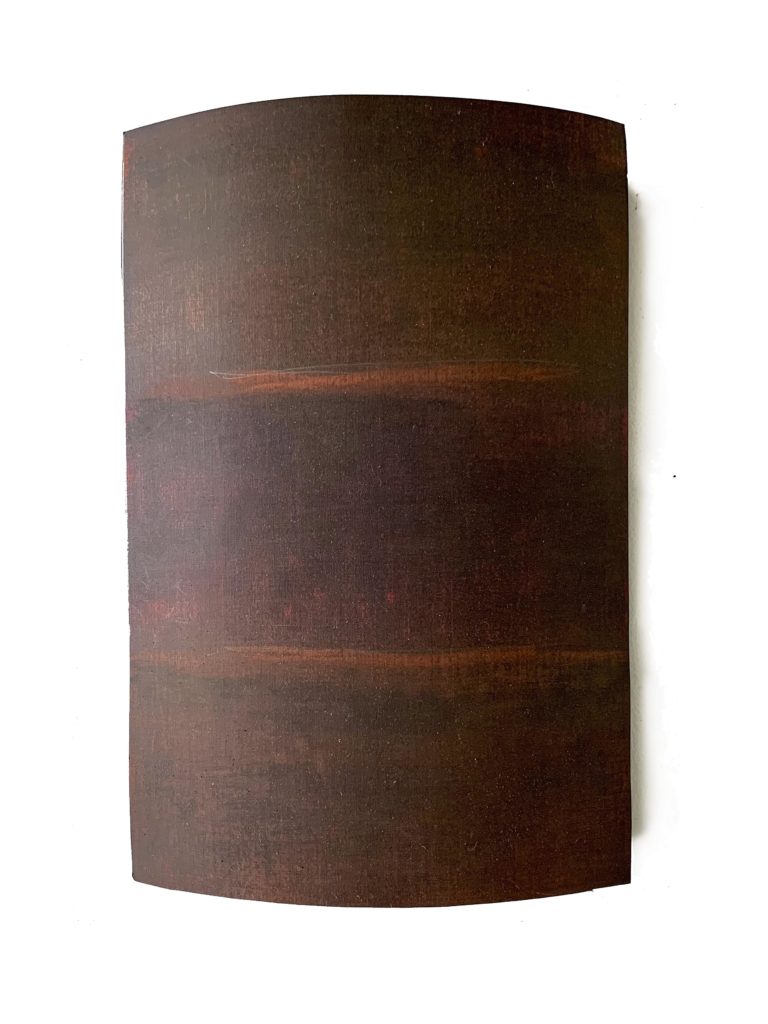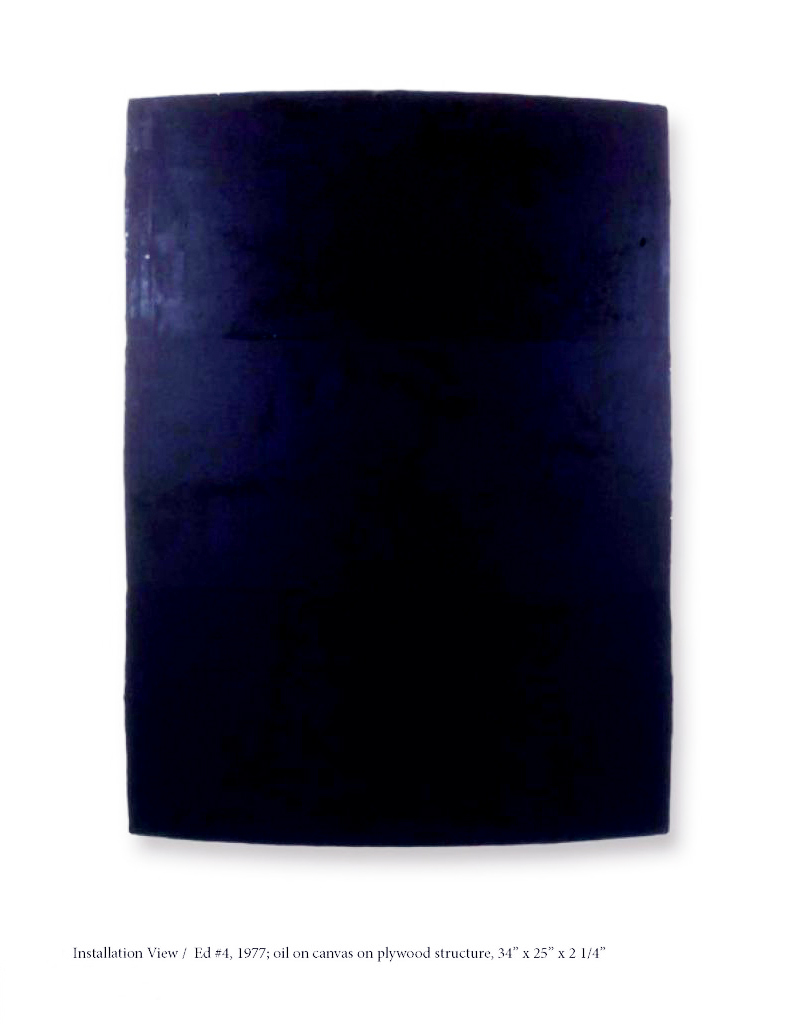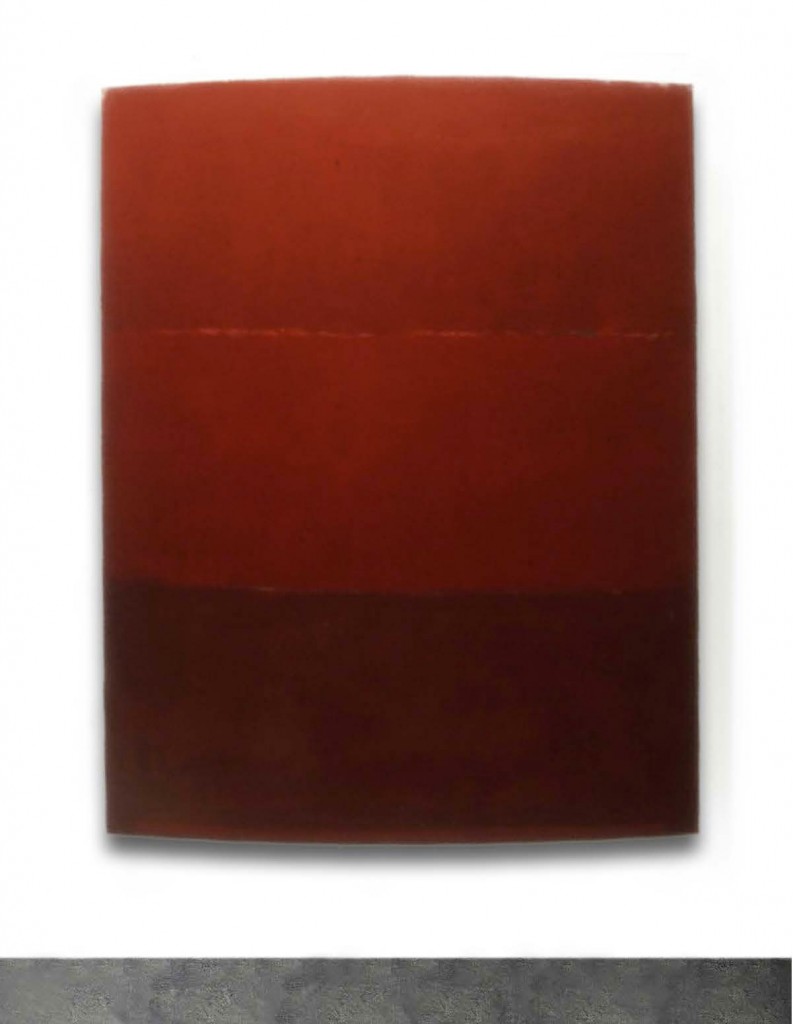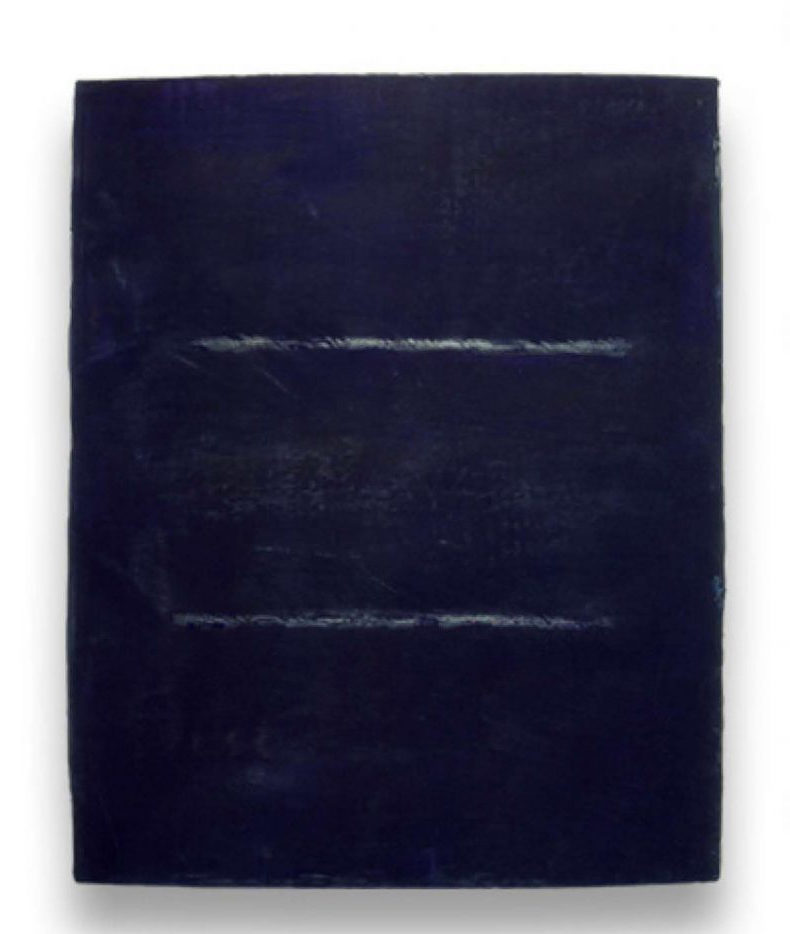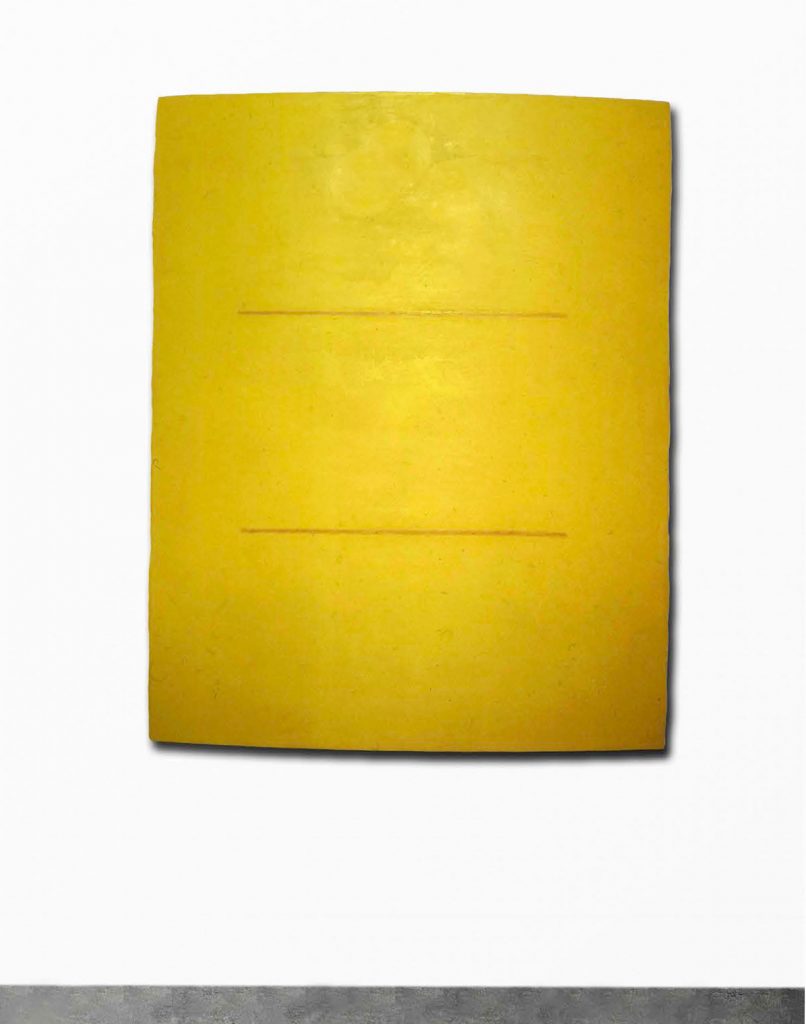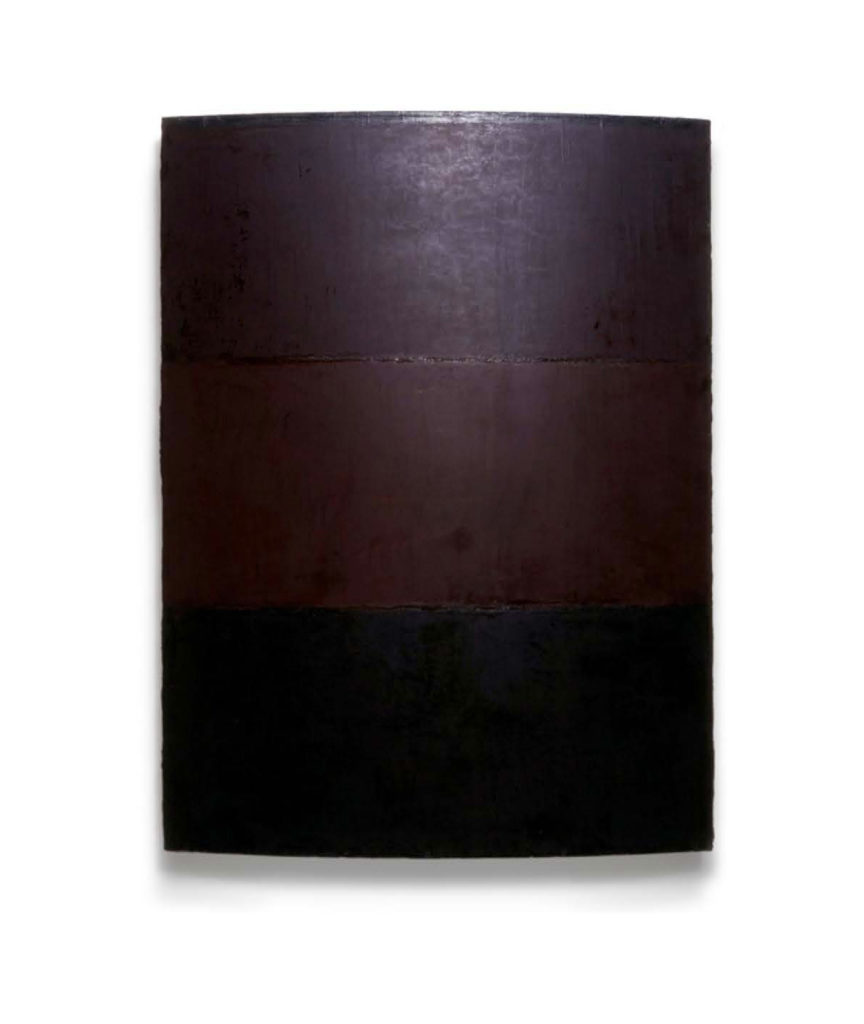No products in the cart.
Studio Update #12
Early Living Below Canal Street
Painting into Distance and Light
In 1975 I rented my first space downtown; it was a large loft 3 blocks south of Canal St, at the corner of Avenue of the Americas and White St, #17, a light manufacturing building. The top, sixth floor on the east side of the building was a perfect studio space. Four windows facing north (high up without a view) and a single side window, looking out west to a flat barren rooftop. *1 (see map of Tribeca)
I painted the space all white, and with no distracting view, it was a perfect environment to be able to totally concentrate. I was a young painter, and it was very important for the slightest change in light to be perceivable. No view to the cityscape, no noise, nor interruption from others, if as in a monastic seclusion.
While there was daylight, the work was constant. First it was the use of pastels to experiment with possibilities – then pigment broken up in mortar and pestle, finely ground into oil paint.
Around that time I met the artist Frederic Matys Thursz, who came to the studio, and in turn asked me to come to his. He introduced me to a fellow artist Jerry Zenuik (who had a studio across from me on Church St.) They had both been working on paintings with a seemingly singular appearance. They were pursuing a vision in line with what I already had been working on. A search for depth of light and color, a state where the painting was to absorb the viewer’s concentration. They also introduced me to a larger group who went to each other’s
studios; and would criticize each other’s works with no restraint. *2
Frederic Matys Thursz
Jerry Zenuik
At the time the art world’s discourse was mired in reductive ideas, pivoting in and out of the imagery of Andy Warhol, Roy Lichtenstein, Jasper Johns.. but at the same time, of the minimal Carl Andre, Donald Judd, Robert Ryman, Frank Stella, Sol Lewitt.
It seemed to me, the pursuit of something as much “visceral” as much “visual” would be worth doing. Here the painting, relying on combined color structures for impact, would operate on its own particular terms, demanding its own time and concentration. It was what the painting did, and what the painting refused to do. *3
Meanwhile I started making structures to create a bent surface out of plywood. They resembled a section of a ship’s hull – ribs bent, holding a continuous surface. A “shaped” painting resonated with some of Tatlin’s structural sculptures. I would stretch canvas on this curved surface, size and prepare it to paint on. The intention was to have the paint on this BENT surface, receive and emit light, behaving not unlike the religious icons I had seen in my childhood.
There were some unsuccessful early attempts, where the paint behaved as if it was animal skin, leathery and flat. Eventually a painterly surface and structure emerged. Two horizontal lines dividing the area into three bands. In these three sections, I could control the color balance and the color quality.
Plywood Structure
22” x 14 7/8 x 2 1/4
Layer upon layer of paint, almost like film, started to create depth, these bands started to come alive. Next it becomes one color, with the two lines eventually taking on different positions, with that continuing the search.
I started to use a mason’s trowel, highly polished to become a perfect burnishing tool. Each layer had to be smooth with no brush strokes remaining, a breath piled up each layer. *4
I continued experimenting with pastels, keeping in mind how far I might I want to take the oil paintings. Their differing physicalities allowed one medium to drive the other. The power of this work is in the subtlety of the colors against the physical aspect of the curved surface. A delicate balance to be sure.
The all white, large open space allowed me to concentrate, to be immersed in the flowing color, its fluidity, it’s physicality so that I could become embedded with the process. *5
Untitled, Pastel on mounted paper
1975-76
There was another key element – to be able to fully experience the work, one has to step back to find the optimal viewing distance. Here, the painting asks the viewer to adhere to its own demand (this is not unrelated to the impressionists; its not the same technique, but they employed the concept of finding viewing distance..)
Amice, 1976;
Oil on canvas on plywood structure, 60″ x 47 1/2″ x 3 1/4”
Untitled, 1977;
Oil on canvas on plywood structure, 15” x 11 3/4” x 1 1/2”
Yellow, 1977;
Oil on canvas on plywood structure, 60″ x 47″ x 3″
When five o’clock came around the heating was off in the building and the elevator man was no longer operating the iron lift cage door. It is when the neighborhood (which was not yet labeled as Tribeca- Triangle below Canal St) would be empty of all the commercial and government employees. *6
Artists of the neighborhood would look for friends and places to spend the evening. Desperate to get loose and shake off the day’s work.
Magoos was a favorite bar where the painters hung out. It used to be a house of ill repute, but Tommy Chaipis, the owner reformed it into a bar and restaurant. It became our living room with a pinball machine, a pool table, a jukebox ,a section of booths, an open area, and a very good long bar with mirrors behind it. A place we came to see and be seen the list of the habituals is long – my friends..Porfirio DiDonna, Ron Gorchov, Bill Jensen, Sherrie Levine, Jake Berthot, Elizabeth Murray, Gordon Hart, Allan Uglow, Alan Kirilli, Paul Rotterdam not only did I see them at night but we would eagerly visit each other’s exhibitions as well.
As regulars and upcoming young artists, Tommy traded art for tabs. That way we even felt more at home as our works hung on the walls.
SoHo was much more established with all the upcoming and well known galleries, as opposed to this area below Canal Street.
There were a few other bars but not many – Puffy’s Tavern, Barnabus Rex, Prescott’s. At night if you saw a light in one of the buildings you knew who was living there. Around the corner on West Broadway was the NJ Mafia hangout, the upscale Italian restaurant Teddy’s. The decor was white and gold. As you entered it had a photo of Elizabeth Taylor and Richard Burton sitting at a table. Black Cadillacs would pull up and disappear. It was all fast and quiet. In a small brick building on the corner of White and West Broadway, John Lennon and Yoko Ono lived for a while. Nobody saw them but we knew they were there. A half a block up West Broadway was the “Liquor Store” selling any amount at all times of the day. No credit and two Rottweilers to make sure everyone paid up. Across from my loft on Church and White was Babydoll Lounge, an all night topless bar, next to Let There Be Neon. Further east on White street, the Synagogue servicing the textile industry.
If you kept going east, there was the famed Mudd Club. It was the real mother of all discoes in NYC. Started by artists for artists. It was wild, loud and had a drug fueled dance floor.
In 1976 I was invited to be in a group show: Artists Invite Artists at Susan Caldwell Gallery (a well regarded gallery on West Broadway, in the same building as OK Harris Gallery- across from the Leo Castelli, Sonnaband.) Both of the paintings I exhibited were received well and in turn Susan invited me to join the gallery.
My first solo show was at Susan Caldwell Gallery in 1977, with good reviews, it was a great start for my work and showing in New York.
Susan Caldwell Gallery, 1977
Bent Painting, 1976 22″ x 14 7/8″ x 2 1/4″
Oil on cavas on plywood structure
Date:
November 1, 2022


